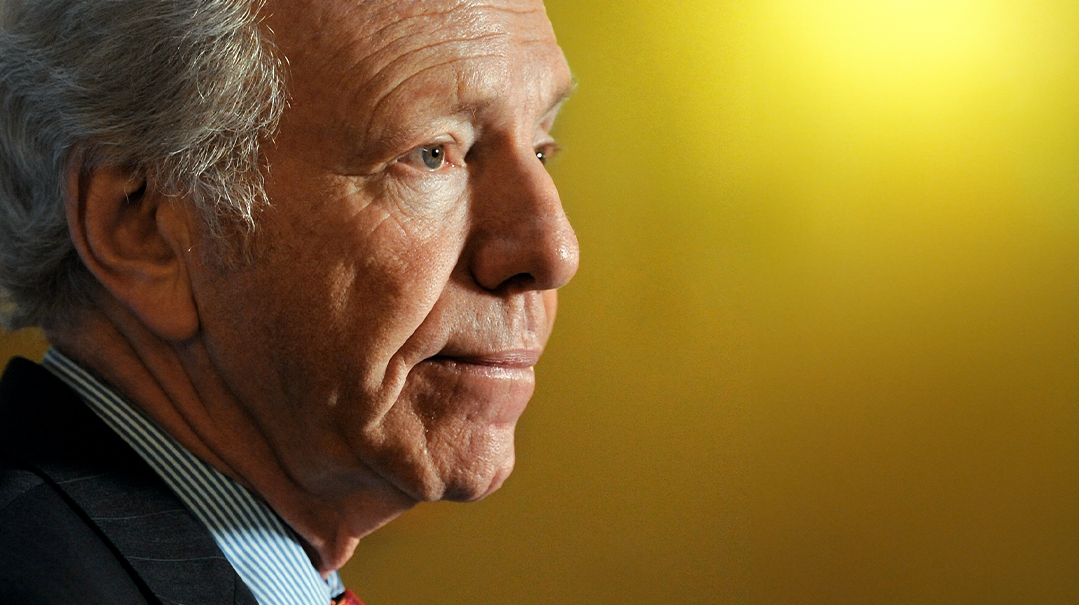Hate Speech
| April 5, 2022To fight anti-Semitism, first define it

Last month Iowa became the first state in the nation to pass a statewide law adopting the International Holocaust Remembrance Alliance (IHRA) definition of anti-Semitism. The law, which is based on a model bill I drafted, requires authorities to use that definition when assessing the motivation behind illegal discriminatory conduct. Versions are currently pending in a number of other states, 19 of which have already endorsed the definition in some fashion.
These bills are necessary because while Jews make up only 2 percent of the US population, they account as victims for 60 percent of all hate crimes directed at a specific religious group, and 13 percent of hate crimes overall. Unfortunately, those numbers are rising, and yet despite the demonstrable prevalence of anti-Semitic incidents, a recent study found that nearly half of all Americans say they have either never even heard the word “anti-Semitism,” or at the very least do not know what it means.
You cannot fight a problem if you cannot recognize and define it, and laws like these do two things: First, they remove any ambiguity as to the state’s definition of problematic discrimination, and put everyone on notice by demarcating the limits of acceptable behavior. Second, they also serve as a way of educating others about what anti-Semitism is, and how Jews today experience it.
As more states move to pass these “anti-Semitism laws” with wide bipartisan support, it is important for the public to be clear about what the IHRA definition is, and how these laws make use of it to better protect our community.
What is the IHRA definition?
The International Holocaust Remembrance Alliance is an intergovernmental organization focused on Holocaust education, research, and remembrance. In the early 2000s, IHRA’s experts resolved to take a leading role in fighting anti-Semitism, and developed a working definition. It was formally accepted by the then 31 countries in the IHRA in 2016, and since that time, 865 separate governments, NGOs, and other key institutions have adopted it as well. The definition has been endorsed by a growing number of world leaders, including the UN secretary-general, and is used by several departments within the US federal government.
While there can be no one exhaustive definition of anti-Semitism, as it can and does take many forms, IHRA provides an objective baseline standard for what is and is not acceptable, and has proven to be an essential tool for identifying contemporary manifestations of anti-Jewish hate.
What makes IHRA different
As the late great Chief Rabbi Jonathan Sacks ztz”l once said, the problem in defining anti-Semitism is that it is a mutating virus; Jews are criticized for being whatever a society, or a part of society, hates at that particular moment. The right will call them radicals, while the left labels them fundamentalists. They are simultaneously too liberal or too conservative, too rich and a drain on the society. It matters little that the reasons are entirely contradictory; anti-Semitism is one of those things that unites people across ideological spectrums.
A definition that encompasses all these possibilities and more must cut through the timely rationales that are given for this timeless hatred, and focus instead on the actions taken by those who harbor hate; a conduct-based definition. To that end, IHRA’s examples highlight the manifestations of anti-Semitism — i.e., what anti-Semites do, as opposed to why they do it, because while anti-Semites around the world may give different reasons for their feelings, those feelings tend to manifest themselves in similar repetitive patterns.
In terms of those patterns, anti-Semites often look at Jews as a collective, which is why the majority of anti-Semitism in any given era tends to focus on the primary form of collective Jewish identity at that point in history. As Rabbi Sacks explained, throughout the Middle Ages, Jews were for the most part a religious community and were hated for their religion. In the 19th and 20th centuries, when many Jews became secularized, the primary unifying collective identity of Jews was their ethnicity, so the hatred focused on race.
Today, when the primary collective embodiment of Jewish People on the world stage is the people of Israel in their nation state, Jews around the world are hated and held accountable for “their” country. That is why the IHRA definition includes several helpful examples of discriminatory anti-Zionism that can sometimes cross the line.
What do critics say about IHRA?
Critics (mostly far left) have challenged IHRA’s use in policy-making on two grounds. First, they say that the very act of defining anti-Semitism somehow stifles free expression — but that is patently false. The IHRA definition does not do anything to silence any speech — even outright anti-Semitic speech. A definition (by definition) just allows people to label things correctly. Anyone can say whatever they want, however abhorrent, about Jews and/or the Jewish state. But while hate speech is constitutionally protected, that does not mean we cannot call it hateful. And even though it makes them uncomfortable, anti-Semites do not get to decide the parameters of anti-Semitism.
Second, critics have claimed that IHRA conflates political speech against Israel with anti-Semitism. That is also not true; there is a safe harbor provision in IHRA itself that specifies that “criticism for Israel similar to that leveled against any other country” is not anti-Semitism, as well as an express caveat that all of the examples given, including the ones about Israel, “could, taking into account the overall context,” be anti-Semitic. Context is crucial here, as it is in all instances of alleged discrimination, and IHRA well accounts for it.
Why are the examples about Israel important?
The reason the specific examples about Israel are provided is explicitly not because all criticism of Israel is anti-Semitic, but because there are those who falsely claim that none can ever cross the line, and use their anti-Zionism as an excuse to target Jewish people and/or institutions. For example: In 2017, a German court decided that the firebombing of a synagogue in Wuppertal was not anti-Semitic, because the criminals claimed that it was just the way they chose to express their anti-Israel politics. That is what happens when the law does not draw some lines in the sand, when people are allowed to confuse speech with acts and conflate politics with discriminatory hatred. Later that same year, and largely in response, Germany adopted IHRA.
Last May, while Israel was defending itself against the terrorist group Hamas, hundreds of synagogues, Jewish community centers, kosher restaurants, Jewish owned businesses, and individual Jews across the United States were targeted and attacked, beaten and bullied, all because of their Judaism. It did not matter if they were actually Zionists; in each instance, the thin veneer of “anti-Zionism” was shattered by open expressions of enraged anti-Semitism, including the use of such classics as “kill the Jews,” and the swastika, not to mention the pummeling of innocent but recognizably Jewish people.
When anti-Zionism crosses over into anti-Semitic acts, it can and should be stopped. These bills will help the government to do that.
What does it mean for a state to adopt IHRA as part of an anti-Semitism bill?
Because Jewish identify is multifaceted, without a standard definition for authorities to reference, it is too easy for anti-Semites to hide behind this ambiguity, commit heinous acts with impunity, then claim it was not anti-Semitism. Practically speaking, the bills we are discussing are actually quite narrow. All they do is ensure that when analyzing the intent behind illegal discriminatory actions (not speech) that target Jewish people, when there is an allegation that the action was motivated by anti-Jewish sentiment, authorities consider (as rebuttable, contextual evidence) the world’s most well-accepted definition of anti-Semitism.
Of course, it is true that the IHRA definition should not (and could not legally) be used as a speech code to police what people say — but that is unequivocally not what these bills do. Unlawful discriminatory conduct can range from illegal hiring, firing, or housing decisions, to hate crimes and discriminatory harassment. Well-established Supreme Court precedent requires behavior to be “objectively offensive” in order to fall under the category of discrimination subject to regulation, and so the definition used to meet this standard in the discriminatory anti-Semitism motivational analysis must be objectively well-accepted. The conduct-based consensus-driven IHRA definition is the only internationally recognized definition of anti-Semitism that there is, or ever has been.
Valid monitoring, informed analysis, and effective policy-making all require uniform definitions. Our officials are responsible for protecting their constituents from acts of hate and bigotry motivated by discriminatory animus — including anti-Semitism — and these laws will help them do that by providing some bright lines. G-d willing, many other states will join this fight as well.
Rabbi Dr. Moshe (Mark) Goldfeder is an international lawyer and director of the National Jewish Advocacy Center.
(Originally featured in Mishpacha, Issue 906)
Oops! We could not locate your form.







